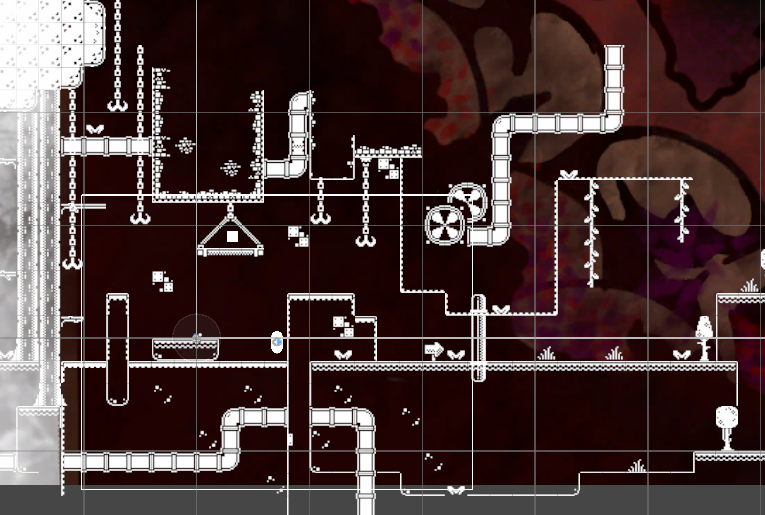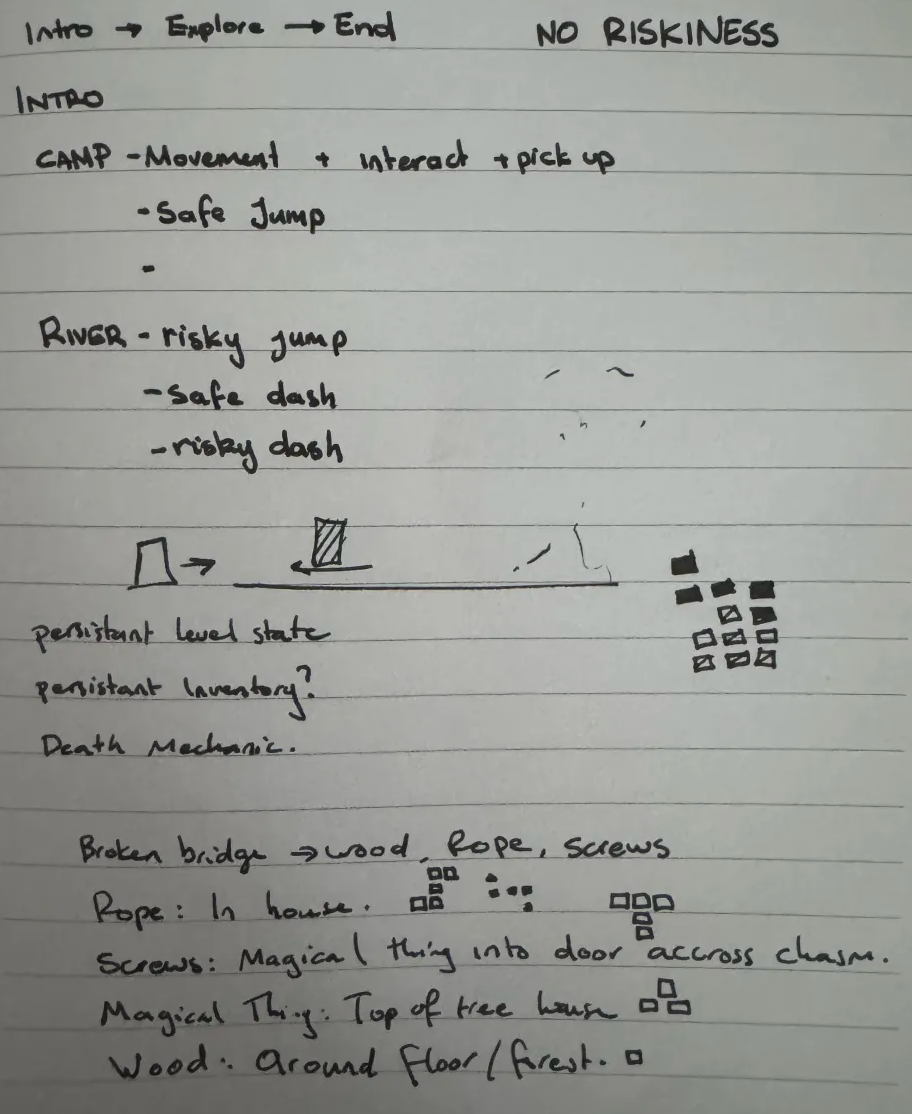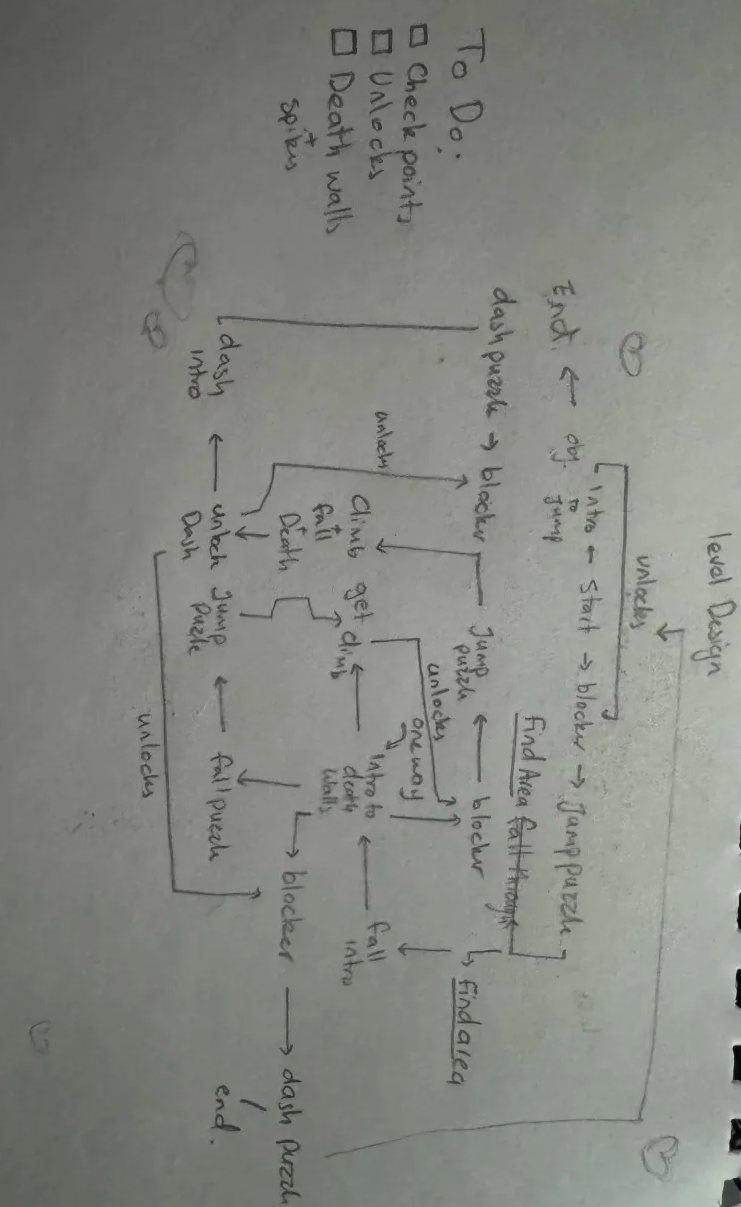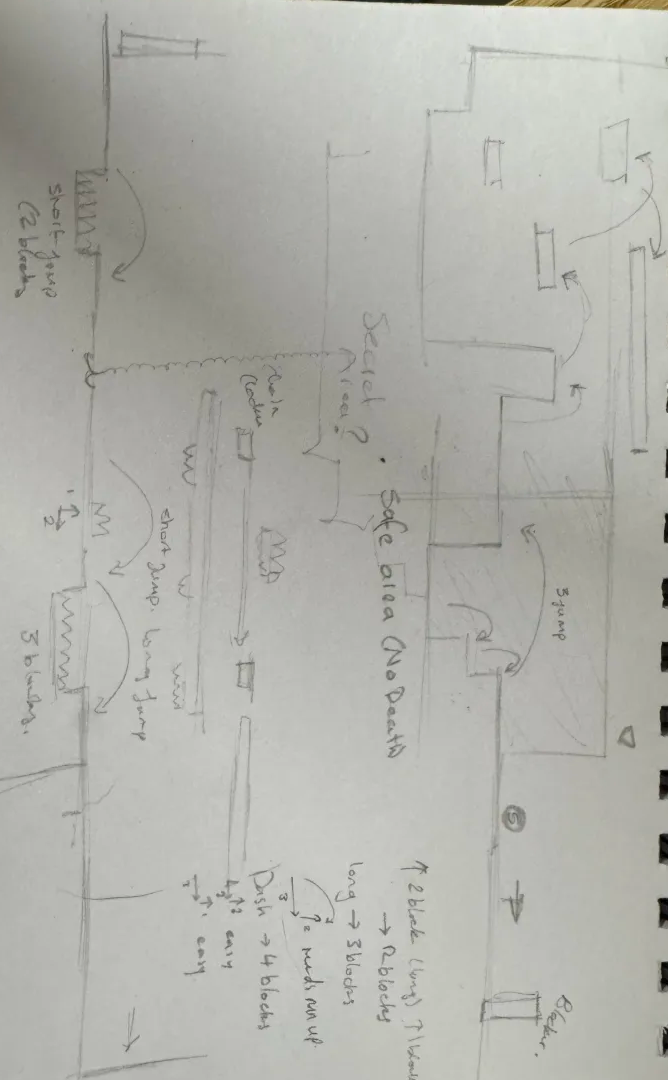Devlog #2
Level Design
Level design is probably my favourite part of video game design. Taking a player character and environmental hazards and shaping them into a world that feels alive, interesting and challenging is so rewarding. Unfortunately, while I planned my mechanics heavily around the level design they took far longer to implement and I didn't have a lot of time to implement the levels I wanted, therefore most of the deisgn I have done is pen and paper
Original Concept
The initial plan for the level was divided across three separate scenes, each designed to teach and challenge the player progressively:

(Intro scene)
- Intro: A confined tent area where the player would be introduced to all basic movement abilities. The space was intended to act as a safe tutorial zone.
- Mid: A larger, more complex area requiring the player to combine movement skills to navigate obstacles and environmental challenges.
- Final: A puzzle-centric zone where the player would need to transport objects collected from the mid-level to complete a final objective.

This three-scene approach was aimed at scaffolding player skill and narrative, giving a clear progression through the mechanics and story.
Rescoping and Iteration
During playtesting and design reflection, it became clear that the original layout created a disjointed experience and slowed the flow of exploration. To streamline gameplay and enhance player engagement, the level was rescoped into a single, cohesive scene with a Metroidvania-style progression:

- Gradual Unlocking of Movement Abilities: Instead of teaching all abilities at once, each movement skill is introduced gradually. This allows the level to organically open up as the player progresses, encouraging exploration and experimentation.
- Integrated Environment: All areas exist within a single connected scene. This eliminates loading breaks, allowing a continuous, immersive experience.
- Increased environmental Hazards: The environment now presents more natural dangers—spikes, falling debris, enemies, or traps—making traversal more engaging and tense.
- Player Risk: Players can now die, introducing stakes that encourage careful navigation and strategy.

Design Considerations
When re-designing the approach I took to level design there were some key design considerations that I kept in mind:
- Player Guidance vs. Exploration: Subtle environmental cues (lighting, color, and terrain shapes) guide the player without relying on intrusive tutorials.
- Skill Gating: Each new movement ability unlocks access to previously unreachable areas, creating layered exploration and encouraging backtracking.
- Flow and Pacing: The level balances tension and relief. Early hazards teach lessons safely, while mid-to-late hazards test mastery and timing.
- Environmental Storytelling: Items, structures, and visual motifs reinforce the post-apocalyptic scavenger theme, giving narrative context to exploration
| Feature | Purpose | Design Consideration |
| Gradual Ability Unlock | Teach skills incrementally | Introduces player to mechanics at a manageable pace |
| Environmental Hazard | Increase challenge | Supports exploration risk/reward and encourages careful movement |
| Puzzle Integration | Engage cognitive skills | Requires use of collected items or abilities to progress |
| Connected Scene | Continuous immersion | Eliminates loading breaks and maintains narrative flow |
| Verticality | Promote exploration | Ladder, dash, jump mechanics open new paths |
| Death | Risk and consequence | Encourages cautious planning and mastery of mechanics |
The redesigned level delivers a tighter, more cohesive experience that balances exploration, challenge, and narrative. By scaling down the scope but increasing depth, the player is encouraged to master each movement ability, navigate hazards, and feel the consequences of their actions. The single-scene, Metroidvania-inspired layout makes the world feel alive, interconnected, and worth exploring, aligning perfectly with the game’s core design philosophy of deliberate, tactile movement.
Going Solo
What Remains Must Wake
| Status | Prototype |
| Author | NimueS |
| Genre | Platformer |
More posts
- Devlog #314 hours ago
- Design Diary: Character Movement #514 hours ago
- Design Diary: Character Movement #414 hours ago
- Design Diary: Character Movement #314 hours ago
- Design Diary: Character Movement #214 hours ago
- Design Diary: Character Movement #114 hours ago
- Devlog #114 hours ago
- Design Diary: Tile-Based Inventory System #514 hours ago
- Design Diary: Tile-Based Inventory System #414 hours ago
Leave a comment
Log in with itch.io to leave a comment.